|
THE ORIGINAL POLICEWOMAN: DOROTHY UHNAK,
WRITER, by Ed Lynskey
Dorothy Uhnak’s fourteen years as a twice-decorated veteran of the New York City Transit Police (1953-67) provided her a unique insider’s view to write one nonfiction and nine fiction crime books. Policewoman (1964), written while she was still in uniform, is a memoir synthesizing her professional experiences. Today such a title might be put under the creative nonfiction category. Saturday Review labeled it a “fine semi-documentary” that “holds the reader’s attention throughout.” Crisply told, richly anecdotal, and unsentimentally frank, this was for me a solid debut book. It also laid the foundation for her subsequent fiction titles, what George N. Dove has called “the seeds of much of her fiction.” The author is largely acknowledged as the first policewoman to write a police lady procedural, virtually pioneering a new sub-genre. The raw material to draw from was fresh in her mind. One year after resigning from the force, she brought out the first of three police procedurals, The Bait (1968) featuring the police detective Christie Opara. The book landed praise in Anthony Boucher’s NYTBR “Criminals at Large” column and netted the MWA’s 1969 Edgar for Best First Mystery Novel. In successive years, two more Opara titles appeared, The Witness (1969) and The Ledger (1970). 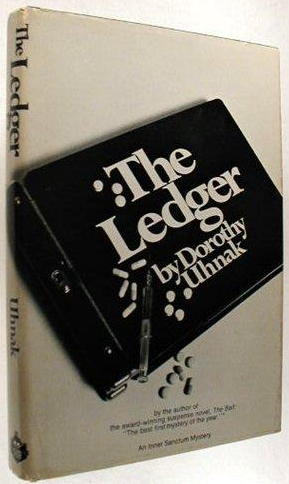 The Christie Opara series played to mixed reviews. Jacques Barzun in A Catalog of Crime cited in The Bait how the “storytelling is accomplished” and liked “the tense and explosive conclusion.” However, he found the saga of Opara as the lone woman cop to be “repetitious and dull.” In The Encyclopedia of Murder, Bruce F. Murphy regarded the Opara storyline as “compelling” and “unromanticized.” He then lamented how the author abandoned the Opara series “rather quickly” and thought that the later fiction was “not so well received.” Critic James Sandoe in The Armchair Detective found Opara “nitwitted.” William L. DeAndrea in Encyclopedia Mysteriosa dismissed the Christie Opara series as a “writing apprenticeship” preparing the author to write “the big police books.” In Crime and Mystery Writers, Carole Cleveland admired the “copious, pounding style that forces the reader to be involved” but wondered when it “makes obvious points three times.” Writing of The Witness in the New York Times Book Review, Al Hubin wrote, “This is a sober story, told with warmth and understanding” and prophetically declared “Miss Uhnak is here to stay.” I found the Opara trilogy a compact, engrossing private eye-like series. It displays Ms. Uhnak’s considerable strengths, including deft characterization. Christie Opara matures through each book, both personally and professionally. By the third book her ambiguous romantic interest in her boss, Assistant District Attorney Casey Reardon, verges close to consummation. Ms. Uhnak’s gimlet eye for gritty realism causes salient moments to be observed in the intensity and vividness an effective police procedural requires. The astute crime fiction reader isn’t overwhelmed with technical information but receives the amount needed to visualize every scene. Mario Puzo may be as much to blame as anybody for Detective Christie Opara’s untimely demise. Encouraged by the runaway commercial success of Puzo’s The Godfather, editor Michael Korda at Simon and Schuster approached Ms. Uhnak about writing a large police novel. The result was Law and Order in 1973, a multi-generation epic about big city cops. Clocking in at 504 pages, the paperback met the blockbuster criteria and marked Ms. Uhnak’s break out to the best-sellers list. The NYTBR hailed it as “rough and tough and authentic” while the Philadelphia Bulletin used such glowing adjectives as “exciting and absorbing” to rate it. Los Angeles Times found it “readable and compelling.” Predictably, The New Yorker took a dimmer view, in part saying, “the cast is endless, the violence is nauseating and milked for all its worth.” The pressure and prestige on Ms. Uhnak to follow up her coup gave rise to The Investigation (1977), a brilliant, atmospheric urban noir. This title outstripped the sales of her previous big book, and for my money is perhaps the best work in her oeuvre. Written in the author’s first First Person POV narrative, Joe Peters, a near-retirement NYPD detective, relates the strange, disturbing case of Kitty Keeler. Did or did not Kitty kill her two small children? The grim ambiguity seems to leave the thorny question for crime fiction readers to decide. It’s an unsettling, thought-provoking book. Barbara Geib writing in NYTBR said, “[Ms. Uhnak’s book] is a well-plotted whodunit, adequately mystifying that at times achieves the fashionably tough, cynical flavor of Hammett or Chandler for which it seems to strive.” The New Yorker conceded it was “excellent” and “thoroughly satisfying.” Finally, H. R. F. Keating included this title on his 100 Best Crime and Mystery Books List. The Investigation also met with its detractors. Newsweek said “her [Ms. Uhnak’s] psychological observations are not particularly astute; her characterizations are credible but hardly profound.” Bruce F. Murphy wrote of it as “a truly disgusting story” and the violence was “excessive.”  Never a very fast writer, four years later in 1981, Ms. Uhnak published False Witness. While still satisfying for me, this smaller book had a less ambitious feel. The crime scene’s grisly descriptions in the opening pages set up the investigation to follow. The plot involves Lynn Jacobi, a tough-minded female assistant district attorney, who takes on a headline-making assault and attempted murder case against Sanderalee Dawson, a renowned TV talk show host. Jacobi, again a first-person narrator, navigating her way around predatory rivals, has been compared to Christie Opara facing her battles. Jacobi’s all-consuming drive to grab the DA’s chair almost sabotages her prosecution. Eliot Fremont-Smith for Village Voice was smitten to say the novel False Witness was “virtually perfect in plot and pace and tone.” Victims (1985) is plotted on the shameful real-life Kitty Genovese incident, where a girl was stabbed to death while dozens of neighbors ignored her pleas for help. Policewoman Miranda Torres and news journalist Mike Stein are frustrated in their attempts to solve the stabbing death of a young nurse, Anna Grace (i.e., “Kitty Genovese”). The narrative builds a moody, well-paced suspense but the ending, striving for what I assume is a surreal ambiguity, falls a bit flat. Publishers Weekly found it “titillating” while Kirkus Reviews gave it a nod for “sharp authenticity” and “genuinely arresting.” Contrastly, Jacques Barzun wrote, “The narrative skill shown in the author’s previous tales exerts itself here again, but her view of the urban jungle is driven in so hard that it loses the power to convince.” If critics believe middle books in a career of writing tend to flag a bit, Ms. Uhnak’s most recent two published novels are stronger efforts. Ryer Avenue Story came out in March 1993. This big book (400+ pages) is not a cop novel like Law and Order. Ms. Uhnak uses it instead to pay homage to where she grew up in the Bronx. The story traces the lives of a group of kids from the Ryer Avenue neighborhood. Despite the James Michener-like narrative sweep, the author remains in convincing control throughout the telling it. These are some exceptional whiz kids. One is elected a Senator with Presidential aspirations. One becomes a Catholic Bishop (with a thinly veiled Bishop Sheen persona) having Papal ambitions. One is an Israeli military leader who is mentioned as the next Prime Minister. All share a dark secret – their culpability in a heinous murder perpetrated on Ryer Avenue. One of their own, the villainous Willie Paycek, threatens to blackmail them with exposure. Ms. Uhnak herself makes a cameo appearance as a discriminated against police officer (for a pregnancy in the 1950s). Though the improbable grandiose plot may be off-putting, the novel’s heroic tenor and memorable cast propels the reader along in what, after all, is a saga. Critics weighed in with Library Journal calling it a “powerful, compelling story.” In her most recent novel, Codes of Betrayal, published in November 1997, Ms. Uhnak returned to her reliable crime themes. Again her skilled ability to draw strong characters emerged. Nick O’Hara, a disgraced NYPD cop, is forced to work under cover in order to redeem himself. Along the way, Nick discovers that the Mafia side of his family killed his father and sets out to right that wrong while helping government build its case against them. 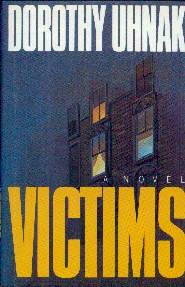 Critics also fell in love with this novel. Booklist wrote, “A super plot, great characters, and a satisfying conclusion could re-establish Uhnak in the upper echelon of crime writers.” Library Journal said it was “a well-paced, well-written tale” while NYTBR used the description “quite moving.” Kirkus Reviews called her prose “telegraphic” and her characters “tantalizingly sketched.” Dorothy Uhnak’s books have been translated into 15 languages, testifying to their international appeal and durability, including an enthusiastic following in France. She is a slow, methodical and careful writer whose somewhat limited corpus is impressive. George N. Dove has noted she is “an experimental writer who has tried new approaches with each undertaking” and eschews any “tight formula.” Although her vision has grown somewhat darker and harsher in the newer titles, she embraces that as a liberating experience which allows her to write more accurately about her police background. And quite often, it is not a pretty one. Her contribution in helping to establish police-turned-authors as viable market forces should also not be underestimated. She preceded Joseph Wambaugh (to whom she is most often compared), William Caunitz, Gerald Petievitch, and other male police professionals/scribes. Female authors coming later who wrote about a tough crime-fighting protagonists include Marcia Muller, Sue Grafton, Sara Paretsky, Nevada Barr, Katy Munger, and Patricia Cornwell. Finally, Ms. Uhnak’s books are on Women’s Studies reading lists at many universities, suggesting that her work has more than a commercial appeal. References and Recommended Reading: Paul Leon Bail, “Dorothy Uhnak” in Great Women Mystery Writers: Classic to Contemporary (Praeger, 1994). Jacques Barzun and Wendell Hertig Taylor, A Catalog of Crime (Harper & Row, 1971). Hans Bertens and Theo D’haen, Contemporary American Crime Fiction (Palgrave, 2001). Carol Cleveland, “Dorothy Uhnak” in Twentieth Century Crime and Mystery Writers (St. Martin’s, 1980). William L. DeAndrea, Encyclopedia Mysteriosa (Prentice Hall, 1994). Frances A. DellaCava and Madeline H. Engel, Sleuths in Skirts: Analysis and Bibliography of Serialized Female Sleuths (Garland Publishing, 1993). George N. Dove, “Dorothy Uhnak” in And Then There Were Nine: More Women of Mystery (Bowling Green State University’s Popular Press, 1985). Bruce F. Murphy, “Dorothy Uhnak” in The Encyclopedia of Murder and Mystery (St. Martin’s 1999). Bibliography - compiled by Steve Lewis.
BOOKS POLICEWOMAN. Simon & Schuster, 1964. Paperback: Macfadden, 1965; Pocket, 1973 (several printings). THE BAIT. Simon & Schuster, 1968. Christie Opara. Paperback: Popular Library, 1969? Pocket, 1976 (at least two printings). THE WITNESS. Simon & Schuster, 1969. Christie Opara. Paperback: Popular Library, 1970? THE LEDGER. Simon & Schuster, 1970. Christie Opara. Paperback: Pocket, 1972 (several printings). LAW AND ORDER. Simon & Schuster, 1973. Paperback: Pocket, 1974 (several printings). THE INVESTIGATION. Simon & Schuster, 1977. Paperback: Pocket, 1978. FALSE WITNESS. Simon & Schuster, 1981. Paperback: Fawcett Crest, 1982. VICTIMS. Simon & Schuster, 1985. Paperback: Signet, 1987. THE RYER AVENUE STORY. St. Martin’s Press, 1993. Paperback: St. Martin’s, 1994. CODES OF BETRAYAL. St. Martin’s Press, 1997. Paperback: St. Martin’s, 1999. TELEVISION POLICE WOMAN 1974-1978 (NBC) Ed Bernard - Det. Joe Styles Angie Dickinson - Sgt. Suzanne "Pepper" Anderson Charles Dierkop - Det. Pete Royster Earl Holliman - Lt. Bill Crowley GET CHRISTIE LOVE 1974-1975 (ABC) Teresa Graves - Detective Christie Love Charles Cioffi - Lt. Matt Reardon (1974) Jack Kelly - Capt. Arthur P. Ryan (1975) Michael Pataki - Sgt. Pete Gallagher (1975) MADE FOR TV MOVIES 1973. The Bait. Pilot show for a non-produced series. Donna Mills, Michael Constantine, William Devane,. Arlene Golonka, June Lockhart. 1974. Get Christie Love! Based on The Ledger. Pilot show for the series. Teresa Graves, Harry Guardino, Louise Sorel, Paul Stevens.. 1976. Law and Order. Darren McGavin, Keir Dullea, Robert Reed, James Olson, Suzanne Pleshette, Teri Garr. 1987. Kojak: The Price of Justice. Based on The Investigation. Telly Savalas, Kate Nelligan, Pat Hingle. 1989. False Witness. Phylicia Rashad, Philip Michael Thomas, Teri Austin, George Grizzard, Robin Mattson. INTERVIEW
WITH DOROTHY UHNAK - Conducted by Ed Lynskey
Introduction: In preparation for my telephone conversation with her, I read all of Dorothy Uhnak’s ten novels and one memoir, Policewoman. On Monday, March 29, 2004 at the prearranged time, I called Ms. Uhnak at her residence in Shelter Island, New York, and we spoke for 37 minutes. She’d just broken her leg and was on bed rest, surrounded by pillows. Only the day before she’d returned home from the hospital. Not at all happy about her confinement, she mentioned she wasn’t going anywhere soon. Dorothy laughingly said she’d tripped over her cat while getting up during the night. She keeps five cats, at least as many dogs, and admits to taking in strays. Fortunately, she had my interview questions in hand which Janet Culbertson, a painter and friend, had given her from our email exchanges. (Ms. Uhnak does not use a computer.) We first chatted about the sleuthing efforts it took us to track her down, and I quickly discovered that Ms. Uhnak is a warm and engaging talker. (Thanks to Steve Lewis for his assistance in the formulation of some of the questions below.) Questions: 1. You were still a decorated veteran of the New York City Transit Police (1953-1967) when you published Policewoman in 1964. Did you have ambitions to become a writer then, and how did you develop your skills and style while in uniform? I’ve always been writing since I was a child. I’d ask for tablets of paper to write on and described the different things I saw around me. I threw the things I wrote into drawers and forgot about them. But I kept on writing. Like Christie Opara, I later typed reports for the male police officers because I knew how to type fast and accurate. 2. A year after you left the department, your first Christie Opara novel, The Bait, was a co-winner of the MWA's 1969 Edgar Award for Best First Mystery Novel by an American Author. Do you recall the circumstances under which you wrote the novel? Based on the success of Policewoman which came out in 1964, Simon and Schuster, my publisher, offered me a book contract. I was still with the police department but wanted to write a fiction work about a police lady. I didn’t want to deal with any conflicts of interest between that goal and my job as a cop. I had a lot of things I wanted to say in my writing. My literary agent finally asked me what I wanted to do: be an author or be a cop? After thinking about things that way, it was an easier decision to make, so I quit the department to become a full-time writer. 3. Tell us something about your series character, Christie Opara. Was she based on any one person you knew while still active in police work yourself? Christie Opara was largely based on me and my experiences as a police officer in New York City. The squad I was on was a great bunch of guys. While I was in uniform, my last assignment was with the D.A.’s Special Investigations Squad, where I saw how things really worked and found out the dirty little secrets about the police department. This gave me the background material to write the three Christie Opara books. I wanted to write about a real police woman to show what she does during her work day. That was my biggest motivation in writing the Opara books first. 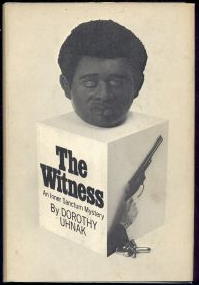 4. There were only three Christie Opara novels in all, and they came out in quick succession, one year after the next: The Bait (1968), The Witness (1969), and The Ledger (1970). A number of mystery readers were disappointed at the time that after these three books, that was all, and no more of her adventures appeared. Can you tell us more about the series? I began notes and doing character sketches for The Bait while I was still in uniform. For instance, the antagonist, Murray Rugoff, was based on a suspect I remember being arrested who had no hair. While I was rummaging around in the police records for the arrest record, a police officer friend asked what I was searching for. I replied “the arrest record for that suspect with no hair, you know Murray Rugoff.” He laughed. No suspect had that name. The Murray Rugoff character was that developed in my mind by the outset of writing The Bait. 5. As most vintage television fans are aware, in the 1970s there was a very popular series with almost the same name as your first book, POLICE WOMAN (1974-1978, starring Angie Dickinson and Earl Holliman). In an interview you did with TV Guide in 1985, you made it clear that the TV series was “not connected in any way with my book of the same title.” Would you care to add to that statement? I wrote the book and someone else wrote the TV series. It wasn’t about my book at all. It was pure Hollywood. I couldn’t watch it like real doctors can’t watch medical shows on TV. She [Angie Dickinson] was always in bed with the suspect, and the cops would arrive in the nick of time to save her. I found it all very insulting. Earl Holliman I thought was a terrific, wonderful actor but whoever heard of a police lady named “Pepper?” 6. In 1974-75, after a two-hour pilot movie, there was a short-lived series based on your Christie Opara books, except that they changed the character's name, among several other crucial elements of the novels. The series title was GET CHRISTIE LOVE, and both it and the pilot show (available on video) starred a black actress named Teresa Graves. Like Angie Dickinson’s “Pepper” Anderson character, Christie Love did a lot of undercover police work, posing as prostitutes, thieves and so on to catch criminals. Would you care to comment further? You were lucky if you never saw the movie. It was self-torture to watch them do such silly things. No police officer did what they portrayed. That actress was a real Laugh In. [A remark made in response to Teresa Grave’s appearances on the old TV comedy show, LAUGH IN]. 7. With as few people who watched GET CHRISTIE LOVE as they did, perhaps even fewer realize that The Bait had been a made-for-TV movie airing earlier, in which they changed Christie Opara's name to Tracy Fleming. Of your later books, Law and Order, The Investigation, and False Justice were also made into television movies. Did you find any of these productions successful? Law and Order was the only movie project I was involved with and the only one I really liked. I helped out with writing some of the dialogue and was invited to be on the set. Later, I flew out to the West Coast and was excited by watching the movie’s production. Darren McGavin and his wife became good friends with my husband and me. We see each other whenever we fly out to California. The Kojak movie was better than most by following the book more closely. 8. Perhaps we should talk more about your books. There definitely seems to be a dividing point in your writing career. After the Opara books, your works became longer and more serious in tone, starting with the bestseller Law and Order in 1973. What decided you to go in this direction? My literary editor, Michael Korda at Simon and Schuster, wanted to do a big police book, like The Godfather. He believed such a book would have the same blockbuster commercial success. He looked around and since I was their in-house police writer, he approached my literary agent with the idea. I was already feeling constrained by the Christie Opara series by wanting to write darker, more sweeping and realistic books because the police department makes you see the real world. I saw a lot of dark things while as a police officer and that’s why I agreed to write Law and Order. 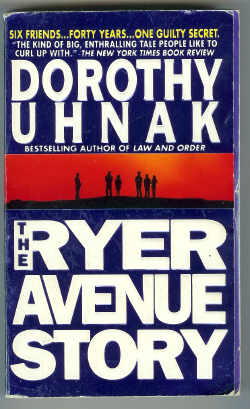 9. Your use of rich historical details in The Ryer Avenue Story (1993) includes cameo appearances by famous figures such as FDR and Eisenhower. What is your approach in weaving a historical backdrop into your narratives? Do you do a lot of research? Yes, I do a lot of research to get it right. Some of it is from memory. For instance, as a girl I remember seeing FDR driving by in a parade during World War Two. On the other hand, I read about the concentration camps but never visited any of them. 10. Setting and atmosphere are integral parts to your novels such as The Ryer Avenue Story, remindful of how Martin Scorsese anchors his films in New York City. Is this the New York you remember? Yes, I was born and grew up on Ryer Avenue in the Bronx near the 46th Precinct and draw much material for writing that book from those years. 11. Families play an essential role in your novels such as The Ryer Avenue Story and Codes of Betrayal (1997). Can you tell us more about your growing up and becoming a police officer? I grew up in a family of four. I had one sibling, a sister and we’re nothing alike. She was the lady and I was the tomboy. My father was a movie house projectionist and worked with the police department. It was very unusual for a lady to join the police department. What other jobs were open to women back then? A secretary? Phpt. I wasn’t going to be somebody’s secretary. So, I joined the police department. 12. You have written book blurbs for such authors as Ed Dee (14 Peck Slip), Sandra Scoppetone (Some Unknown Person) and Phillip Margolin (Heartstone). Which other fiction authors do find interesting today? Which writers did you find helpful and influential in your development as a writer? I don’t recall any offhand, but I’m a big reader. One room is lined from floor to ceiling with books. [Ms. Uhnak has stated previously that she is not a fan of most crime fiction and resists the notion that she is a genre novelist.] Many mystery and crime fiction readers remember your work with great fondness. You've given us a good deal of pleasure in our reading. Thank you for taking the time to talk to us for a short while. Thank you, Ed. I enjoyed talking with you. Note: This article, bibliography and interview first appeared in Mystery*File 44, June 2004. Postscript: The following collaborative review appeared in Mystery*File 46, November 2004: GET CHRISTIE LOVE! - Viewed and Reviewed by
Steve Lewis and Vince Keenan.
Made-for-TV movie; 1974. Teresa Graves [Christie Love], Harry Guardino [Captain Casey Reardon], Louise Sorel [Helena Varga], Paul Stevens [Enzo Cortino]. Screenplay: George Kirgo, based on the novel The Ledger by Dorothy Uhnak. 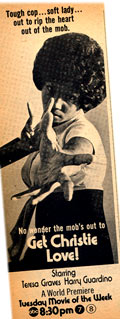 Steve: Steve:I don’t have access to my copy of the book, and it’s been far too long for me to remember anything about the novel, but it’s fairly obvious that there’s been some changes made. Uhnak’s series character was the police woman Christie Opara, not Christie Love, and I’m sure she was white, not black. The police work in the book was “real life,” and the police work in the movie was “made for tv,” or in other words, sheer flights of fancy, more often than not. Which is not to say that the movie is not entertaining, for it is, and the “gimmick,” the surprise that makes the ending work, is probably the same in both the book and the movie – or why else use the book as the basis for the movie in the first place? I should start at the beginning. The villain, Enzo Cortino, is a drug dealer, whose activities are recorded, the police discover, in a ledger that Cortino’s girl friend, Helena Varga, keeps in her possession. Christie Love’s assignment, given to her by Captain Reardon, in pseudo-blustery fashion, is to get the ledger. Some general comments follow, more or less in the same order as they struck me while watching the film, which is available on DVD. While Graves had a limited range of acting ability, mostly smart to sassy, she is easy on the eyes and more-or-less convincing in close hand-to-hand (karate-related) combat with various of Cortino’s minions, one of whom goes over the balcony on the losing end of one of rough-house struggles she finds herself in. In one of the opening scenes, introducing her to the viewer, she is (of course) posing as a hooker in an attempt to nab a guy who’s been bad to prostitutes. One guy whose overtures she turns down calls her a nigger in frustration. Her retort, as she sashays off: “Nigger lover.” My jaw dropped. This was an era when cops were routinely called “pigs,” and so they are here. As a cultural artifact, this is a gem in the rough. The background music is typical 70s jazz, or what passed for jazz at the time, in suitably ersatz-Mancini fashion. It’s most noticeable during car chases and other moments of great importance. Christie’s own mode of transportation is a yellow Volkswagen convertible, and as soon as you realize that that’s her car, you begin to wonder if it will survive the movie. You will have to watch to find out, as critical plot points like this should never be revealed by reviewers in advance. The most important plot detail that also surprised me, and for whatever reason, it’s the one that has stuck with me over all the years since I watched this movie the first time, is the semi-love interest between Christie and the interminably shaggy Reardon. She archly refuses his semi-advances until perhaps the closing scene. Hints are all we get, but a black and white romance, in 1974? That’s all that we could get. (When did Kirk kiss Lt. Uhara? Sometime in the 60s, I’m sure, but – as I recall – one of the two was possessed by an alien entity, and so it didn’t count.) Harry Guardino did not survive the cut and did not appear in the follow-up television series, which lasted only a year, nor as I recall, was there any more hanky-panky between Christie and her superior(s), nor even the hint of any. I have not been able to locate, so far, any of the shows from the TV series on either video or DVD, but I watched them at the time, and strangely enough, while memory is sometimes fickle and fleeting thing, I seemed to have enjoyed them more than Angie Dickinson’s show, whatever it was called. 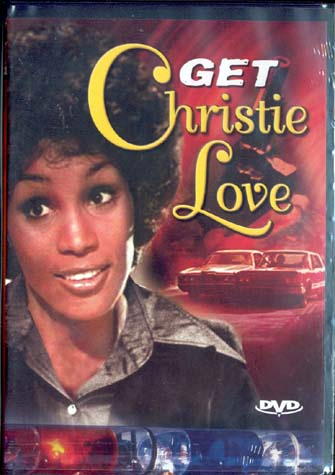 Vince: An entire generation would be unfamiliar with GET CHRISTIE LOVE, the 1974 ABC TV series inspired by Dorothy Uhnak’s Christie Opara novels, were it not for Quentin Tarantino. The pop-culture obsessed filmmaker devoted a lengthy exchange to the show in his 1992 heist drama RESERVOIR DOGS. Christie's signature line, “You're under arrest, sugar,” is fondly recalled by a team of thieves. But their memories of the series aren't entirely positive – Mr. Orange (Tim Roth) dismisses it as “a Pam Grier TV show without Pam Grier” – or all that clear, evidenced by the fact that none of the heisters can think of the name of the actress who played the title role. But it’s from such affection that cults are born, and the 1974 pilot film for the series has been released on DVD. Perhaps “released” is not the right word. “Escaped” may be more appropriate. The image quality is terrible; it looks as if the show has been taped off late-night TV and the ads for debt consolidation services edited out. The packaging claims that the print has been digitally remastered, but the packaging also gets the director's name wrong (it’s William A. Graham, not Guardino), so I don’t know what to believe. The film, adapted by George Kirgo from Uhnak's 1970 novel The Ledger, is a fairly straightforward police tale. As part of a special investigative unit, Christie is assigned to shadow a Los Angeles drug kingpin's mistress who may know the whereabouts of the criminal organization’s records. The standard plotting is elevated by a few nice twists regarding the location of the ledger and the mechanics of the drug trade. I wouldn't be surprised to learn that these developments were taken directly from Uhnak's novel. Otherwise, Mr. Orange’s assessment isn’t far wrong. The film is a watered-down TV version of a blaxploitation movie. Christie is played by former LAUGH-IN star Teresa Graves. (Not Anne Francis, as Mr. Orange suggests. Anne Francis played Honey West. She is also, as Mr. Pink observes, white.) Graves is a lovely woman who looks fetching in her many outfits as she tools around in her Volkswagen convertible. Sadly, she is unconvincing as a police officer, pitching all of her dramatic scenes at the same emotional level. Louise Sorel gives the film's best performance as the icy gangster’s moll with her share of secrets, and Harry Guardino registers strongly in his handful of scenes as Christie’s superior and would-be love interest. The biggest surprise about the show is its casual use of racially-charged language and frank depiction of drug use, proving that television for adults was not invented with THE SOPRANOS. GET CHRISTIE LOVE! is not worth seeking out except as an artifact of its era. Or as a tool for inspiration. Tarantino should acquire the rights and mount a new version with Halle Berry in the lead role. “You’re under arrest, sugar” is a line worth hearing again. ________________________ YOUR COMMENTS ARE WELCOME. stevelewis62 (at) cox.net Copyright © 2004 by Steve Lewis. All rights reserved to contributors.
Return to
the Main Page.
|